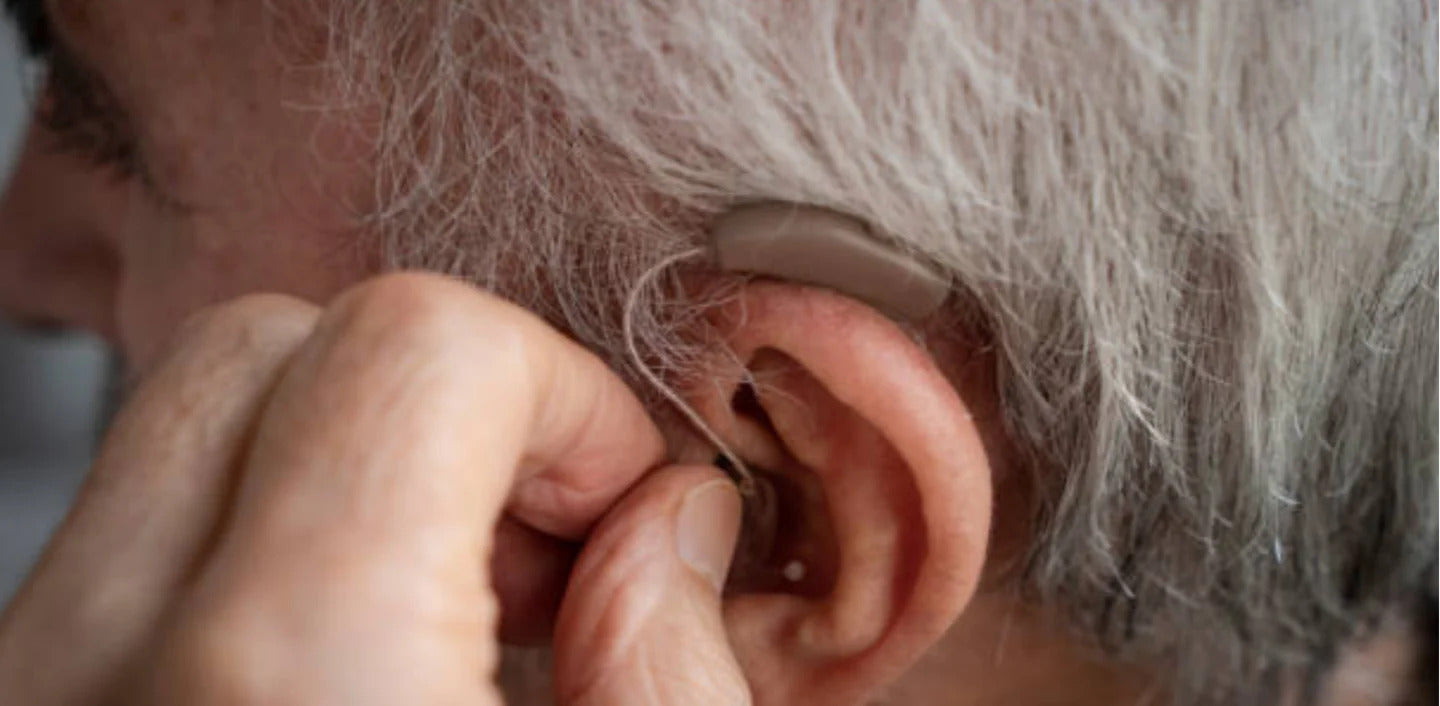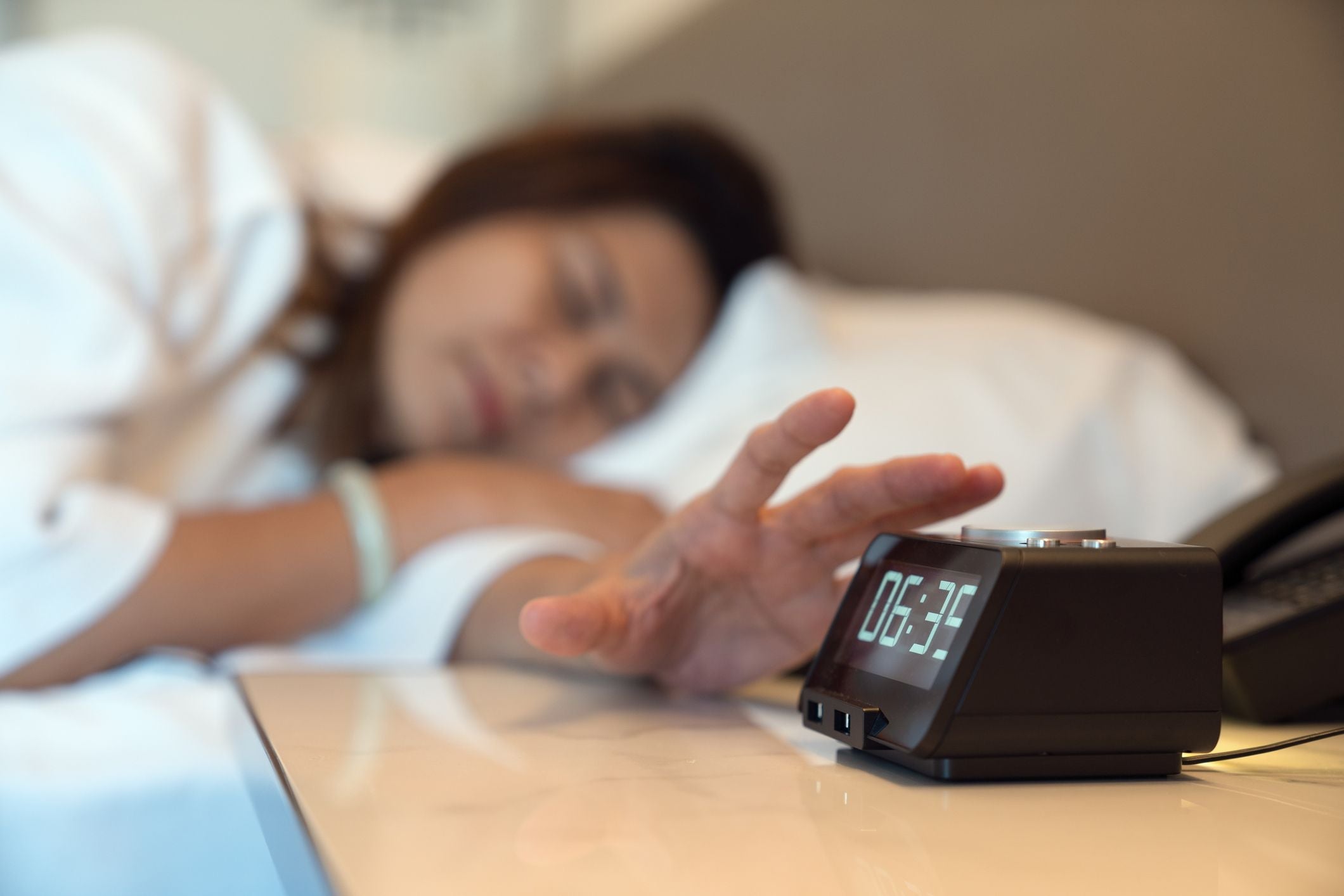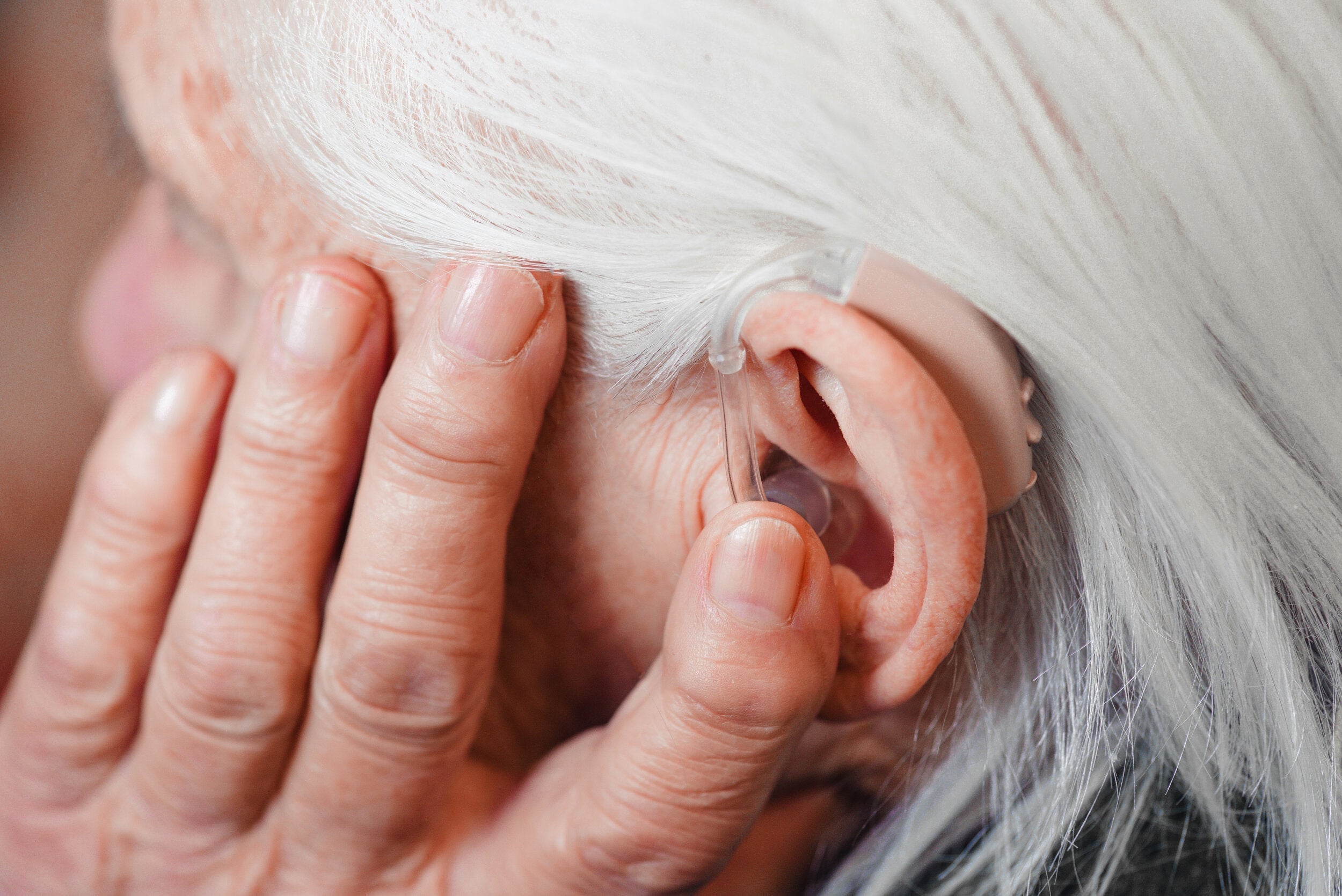今日は、おそらく多くの人が経験したことがあるであろう、補聴器のフィードバックについてお話しましょう。補聴器を装着しているときに時々聞こえる、あの甲高いブーンという音や鋭いヒューという音です。これは一般的に「フィードバック」と呼ばれており、単に不快なだけでなく、明瞭に聞こえる能力を著しく損なう可能性があります。では、なぜフィードバックが起こるのでしょうか?この記事では、補聴器のフィードバックとは何か、どのように起こるのか、そして最も重要なこととして、どのように対処すればよいのかを詳しく説明します。
補聴器をお使いになったことがある方、あるいはこれから購入を検討されている方は、あのイライラするフィードバック音を避ける方法を知りたいはずです。そこで、よくある原因をいくつか解説し、問題を予防・解決するためのヒントをご紹介します。さらに、実際の事例もいくつかご紹介するので、理解を深めていただけます。特にフィードバック音を抑えるように設計された補聴器をお探しなら、Cearvol Diamond X1 Black 充電式補聴器がおすすめです。音質を向上させ、干渉を低減するように設計されているため、よりスムーズな聴取体験が得られます。
🚀 この投稿をナビゲート
以下もご興味があるかもしれません:
- どれくらいの音量がうるさいのか?デシベル表でデシベルレベルを理解する
- テレビの音が聞き取りにくいですか?このテレビ用補聴器を使えば、すべての言葉が明瞭に聞こえます!
- 色が聞こえますか? 魅惑的な色覚の世界を発見!
パート 1: 補聴器のフィードバックの原因は何ですか?
補聴器のフィードバックの解決方法に入る前に、その原因を理解することが重要です。フィードバックは、甲高いキーキー音やヒューヒュー音として聞こえることが多く、通常は耳から漏れた音が補聴器によって再増幅されることで発生します。最も一般的な原因をいくつか見ていきましょう。
1. 緩い、または適切に装着されていない補聴器からのフィードバック
補聴器のハウリングの最も一般的な原因の一つは、不適切な装着です。補聴器が耳に正しく装着されていないと、音が漏れ、マイクがそれを拾って増幅し、ハウリングループが発生する可能性があります。これは、外耳道が狭い方や耳垢がたまりやすい方に特によく見られます。

例えば、ジョンというお客様が、補聴器を装着しているときに持続的なフィードバック音が発生するという苦情を訴えて来られました。簡単な点検の結果、補聴器が耳に正しく装着されていないことが判明しました。外耳道の形状により、耳と補聴器の間に隙間が生じ、音が漏れていました。その結果、マイクがその音を拾い、フィードバック音が発生していました。
2. 補聴器の中で何が起こっているのでしょうか?
マイクが耳から漏れる音を拾うと、それを増幅して耳に戻します。そして、再び増幅されます。このプロセスによって音の波形が変化し、不快な鋭いヒューヒューという音が発生します。補聴器のハウリングは、本来自然に聞こえるはずの増幅された音をマイクが拾い、ループに入り込んで再び増幅されることで発生します。このハウリング音は、ハウリングの原因となるのです。
パート 2: 補聴器のフィードバックを止めるにはどうすればよいでしょうか?
補聴器のフィードバックの原因がわかったので、次は解決策についてお話ししましょう。フィット感を改善したり、設定を調整したりするなど、フィードバックによる日常生活の妨げを防ぐためのシンプルで効果的な方法がいくつかあります。
1. 適切なフィット感を確保する
フィードバックを軽減するための第一歩は、補聴器が適切に装着されていることを確認することです。補聴器が耳の穴にしっかりと固定されているか、定期的に装着状態を確認することをお勧めします。正しい装着方法がわからない場合は、聴覚専門医に相談するか、取扱説明書を参照してください。

CearvolのDiamond X1充電式補聴器のような高品質な補聴器には、カスタムメイドのイヤーチップやモールドが付属しており、より快適な装着感とフィードバックの軽減に役立ちます。ぴったりとフィットすることで、フィードバックの主な原因の一つである音漏れを防ぐことができます。
2. 音量と設定を調整する
ハウリングを防ぐもう一つの方法は、補聴器の音量と設定を調整することです。音量が高すぎる場合やゲインが高すぎる場合にハウリングが発生することがあります。音量を下げるか、補聴器のノイズ低減設定を使用すると、この問題を軽減できます。
3. 耳を清潔に保つ
耳を清潔に保つことも重要です。耳垢がたまると、補聴器からフィードバックが生じることがあります。耳垢が外耳道を塞ぐと、補聴器のマイクがそれらの音を拾い、フィードバックを引き起こす可能性があります。これを防ぐには、適切な器具を使って安全に耳垢を取り除くことをお勧めします。
パート3:補聴器のフィードバックのその他の考えられる原因
補聴器のフィッティングや設定以外にも、ヒューヒューという音が発生する原因はいくつかあります。その他の要因と、その対処法について詳しく見ていきましょう。
1. 環境要因
環境要因もフィードバックの原因となります。強風や高音などの外部騒音は、補聴器の性能に影響を与える可能性があります。例えば、風の強い日に屋外にいる場合、風が補聴器のマイクに直接吹き込み、フィードバックが発生する可能性があります。同様に、非常に騒がしい環境では、補聴器が聞きたい音と背景雑音を区別しにくくなり、フィードバックが発生する可能性があります。

2. 補聴器の種類
フィードバックに影響を与えるもう一つの要因は、使用している補聴器の種類です。補聴器の種類によって設計が異なり、中には他の補聴器よりもフィードバックの影響を受けやすいものがあります。例えば、耳かけ型(BTE)補聴器は耳の外側に装着するため、外部からの音の干渉を受けやすく、一般的にフィードバックが発生しやすい傾向があります。一方、耳かけ型(ITE)補聴器は耳の奥深くに装着するため、目立たず、フィードバックの影響を受けにくい可能性があります。
しかし、同じスタイルでもデザインは様々です。補聴器の中には、フィードバックを軽減するフィードバックキャンセルシステムなどの追加機能が搭載されているものもあれば、こうした高度な技術が搭載されていないものもあります。
結論 – 補聴器のフィードバックへの対処
補聴器のフィードバックはよくある問題ですが、適切な手順を踏めば簡単に対処できます。適切な装着、設定の調整、耳の清潔さの維持、その他の環境要因や設計要因への配慮によって、フィードバックを軽減または解消し、より良い聴覚体験を楽しむことができます。

Diamond X1 - Bluetooth搭載の最高の補聴器
新人価格
249.99ドル309.99ドル
- ✔ クリアな聴覚を実現するアダプティブサウンド モード。
- ✔ 通話とストリーミング用の Bluetooth。
- ✔ アプリ制御のカスタマイズ可能な調整。
- ✔ 充電可能で急速充電。
- ✔ 軽度から中程度の難聴に最適です。
現在、フィードバックの問題でお悩みの方、あるいは高品質な補聴器をお探しの方は、CearvolのDiamond X1 Black充電式補聴器をぜひご検討ください。優れた音質を実現し、フィードバックを最小限に抑えるように設計されているため、信頼性が高く快適な補聴器をお探しの方に最適です。




コメントを書く
全てのコメントは、掲載前にモデレートされます
このサイトはhCaptchaによって保護されており、hCaptchaプライバシーポリシーおよび利用規約が適用されます。